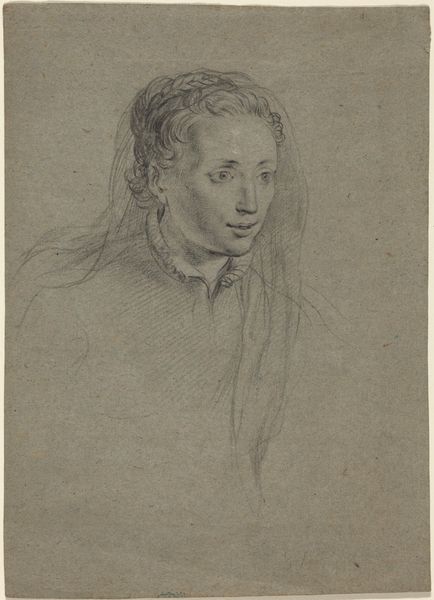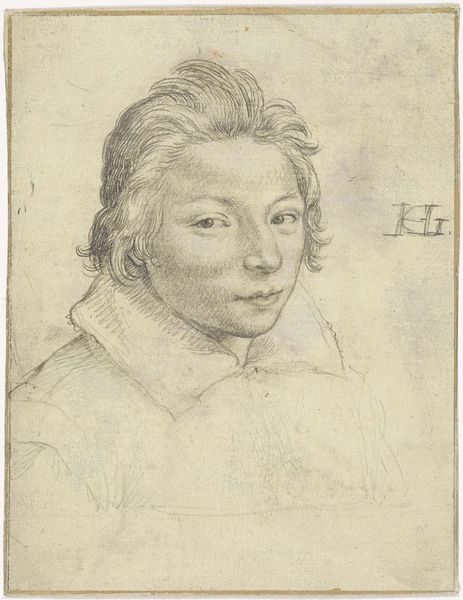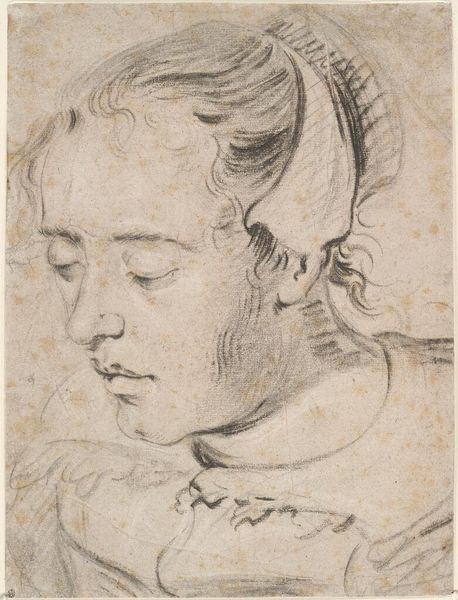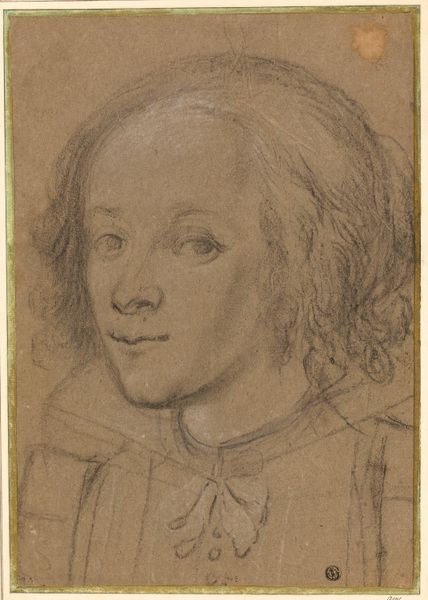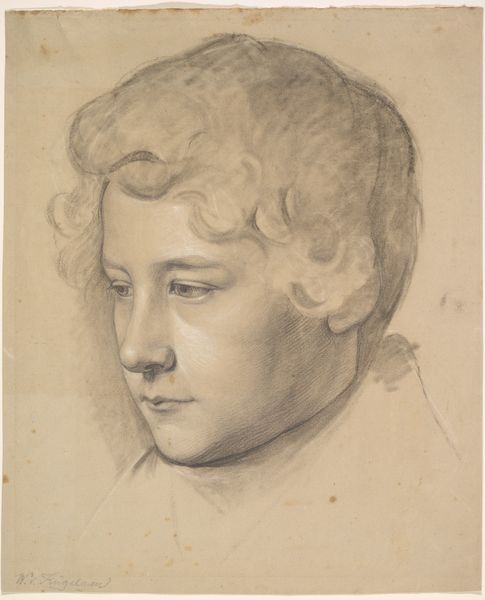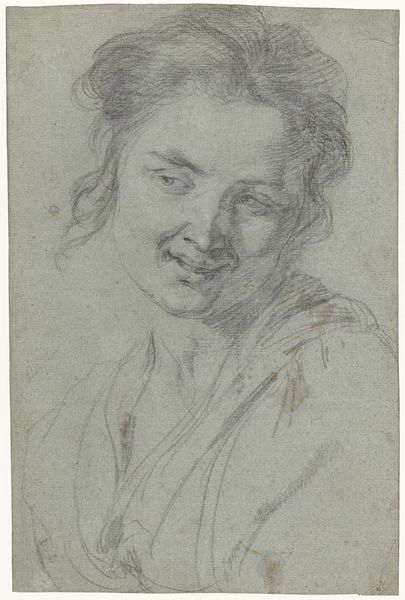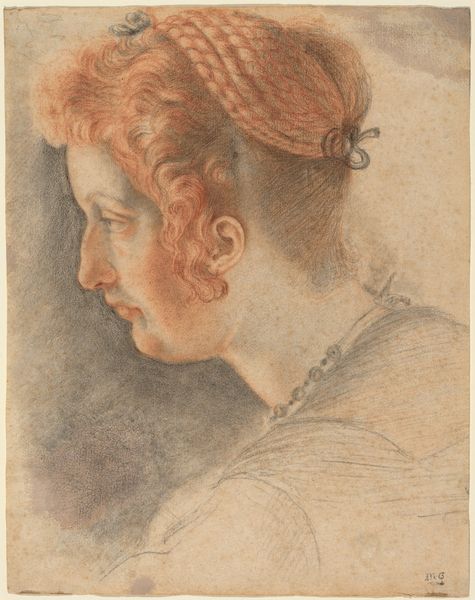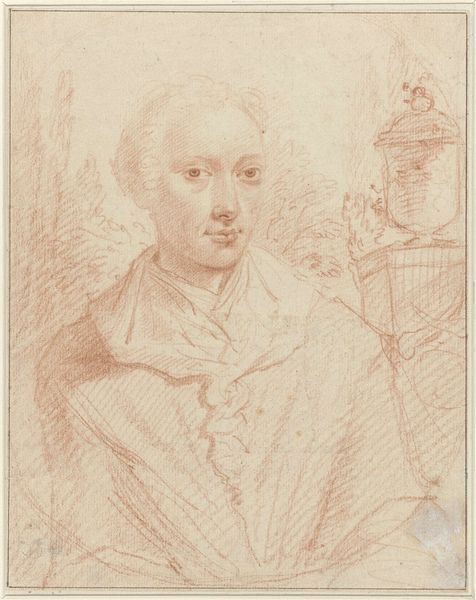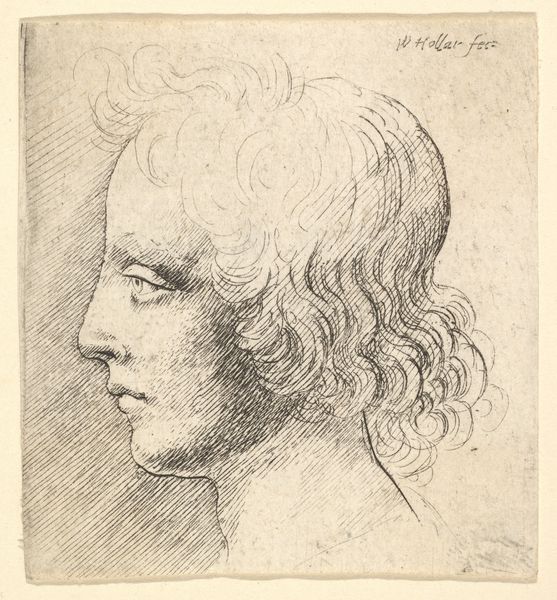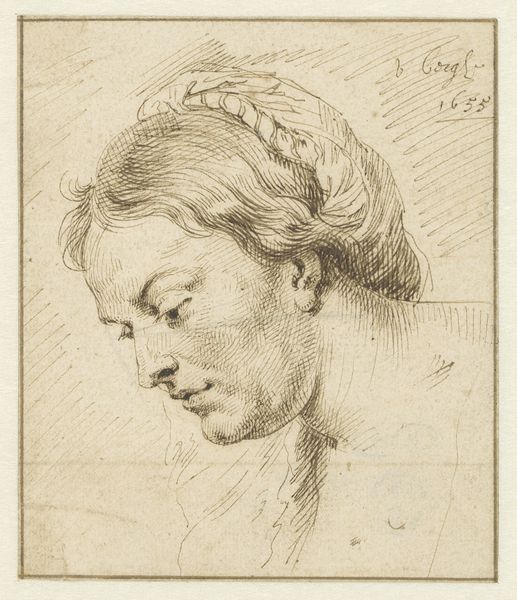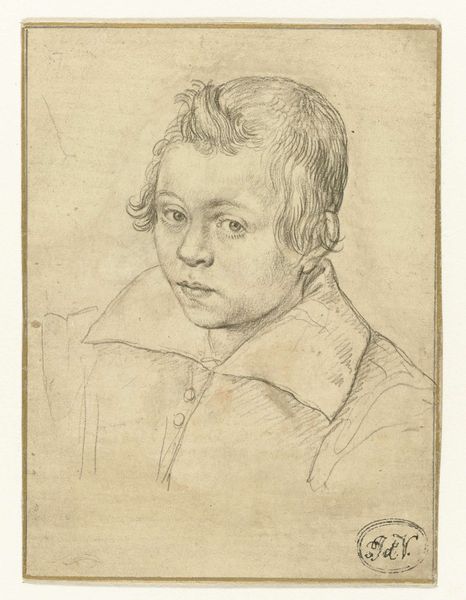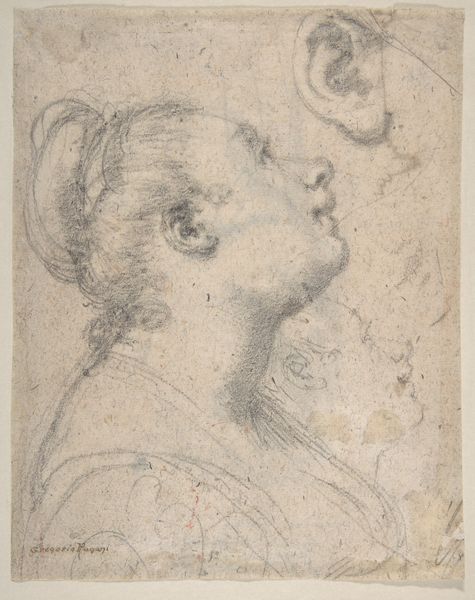
drawing, paper, chalk
#
portrait
#
pencil drawn
#
drawing
#
paper
#
form
#
11_renaissance
#
portrait reference
#
pencil drawing
#
chalk
#
line
#
portrait drawing
#
academic-art
#
italian-renaissance
Dimensions: 265 × 186 mm
Copyright: Public Domain
Curator: This chalk drawing, "Head of a Woman," comes to us from Paolo Veronese, dating to about 1575. It is now part of the collection at the Art Institute of Chicago. Editor: It's almost a whisper of a portrait, isn’t it? So gentle, so subdued. She looks a little melancholy, or perhaps just deeply thoughtful, captured in a very fleeting moment. The lines are soft. I wonder what she was thinking. Curator: Well, portraiture during the Italian Renaissance was profoundly impacted by shifting cultural currents. Veronese's work, especially considering the social and political structures of the time, encourages us to contemplate how gender roles were being codified and expressed in visual culture. How were women seen, or allowed to be seen? Editor: Right, that’s what I was feeling too— a kind of enforced introspection. Look at the way the light catches her cheek, drawing us in, but then her gaze… it drifts downward, inward. It's like she’s politely avoiding our stare, yet her averted gaze has its own language. I find it really moving. I wonder, was this sketch done for a larger piece? Curator: It very well could have been a study. Veronese was known for his dynamic compositions and use of preparatory drawings, which helped him orchestrate the complex figures within his grand, expansive paintings. Looking at this drawing, it's clear how meticulously he worked through details of light, shadow, and form to convey not just likeness but also psychological depth. It speaks volumes about the Renaissance concept of the individual. Editor: It makes you want to reach out and reassure her, whoever she was. Imagine being observed that closely, memorialized. The fleeting nature of a drawing too – all those erased or softer strokes still there – is as if capturing an essence, rather than an absolute reality, which of course there isn't, really. Curator: Ultimately, the work leaves one with more questions than answers. The way Veronese portrays the "Head of a Woman," situated in her specific historical, social context, and viewed through our contemporary lenses – allows us to ponder and interrogate our understanding of identity and representation itself. Editor: Yes. It is haunting how relevant that quiet struggle still feels, centuries later. What a gem.
Comments
No comments
Be the first to comment and join the conversation on the ultimate creative platform.
